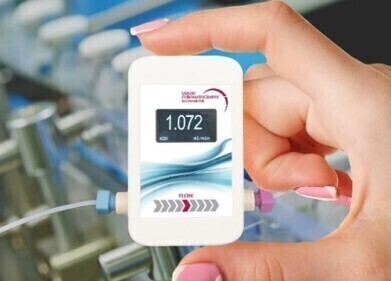HPLC, UHPLC
Staying Ahead of the Forgers
Sep 05 2016
Art forgery is big business. For forgers, the ability to recreate a classic work of art and get it accepted by the experts as an authentic work of art gives a forger great pleasure. But authenticating art is not only an art nowadays — but a science too. And new tools in the expert’s arsenal are making it ever harder to beat them.
Han van Meegeren — master forger
Han van Meegeren is considered the most prolific forger of the twentieth century. Van Meegeren made close to $30 million creating knock-off Dutch masters — notably Vermeer. He not only painted in the style of Vermeer — but actively tried to copy Vermeer in materials too.
To help add a touch of authenticity to his paintings, van Meegeren sought out seventeenth century canvases and frames for his paintings. He also tried to copy Vermeer’s brush strokes — one of the give-aways of a poor forgery — by using brushes and paints that Vermeer would have used when painting his originals.
One of the ways van Meegeren had to compromise though is in the make-up of his paints as he had to use Bakelite — an early plastic — to help his paints dry. The original paints used by Vermeer would have taken close to fifty years to completely dry, van Meegeren had to speed that process up.
Can the forgers beat chemistry?
With the vast sums of money involved in fine art, it wasn’t long before analytical chemistry was helping the experts fight back. Spectroscopy and chromatography have been routinely used by experts to help detect forgeries — in fact, it was gas chromatography in tandem with mass spectrometry which helped find the secret of van Meegeren’s quick drying paint — long after his death though.
High performance liquid chromatography (HPLC) was used by The National Gallery in the investigation into the painting The Virgin and Child with an Angel, a painting acknowledged as a fake in 1955. HPLC was used in 2009 in new analysis into the painting, particularly the binders in some red pigment. The analysis showed that the pigment was probably from the nineteenth century — pretty good for a painting thought to have been painted in the fifteenth century. HPLC is constantly advancing —to help stay up to date see the article, Recent Developments in Support Materials for use in High Performance Liquid Chromatography.
New advances in forgery detection
But the forgers have moved on to, and they are aware of the analytical chemistry techniques that the experts have brought to bear on their practices. To stay ahead, art experts are investing in new techniques.
The technology that keeps bitcoin transactions safe — blockchain — can now be used to keep original digital art safe and synthetic DNA can now be embedded in work of art to provide protection against forgeries. But as technology moves forward — you can be sure that the forgers are running to get ahead.
Digital Edition
Chromatography Today - Buyers' Guide 2022
October 2023
In This Edition Modern & Practical Applications - Accelerating ADC Development with Mass Spectrometry - Implementing High-Resolution Ion Mobility into Peptide Mapping Workflows Chromatogr...
View all digital editions
Events
Jan 20 2025 Amsterdam, Netherlands
Feb 03 2025 Dubai, UAE
Feb 05 2025 Guangzhou, China
Mar 01 2025 Boston, MA, USA
Mar 04 2025 Berlin, Germany



.jpg)








